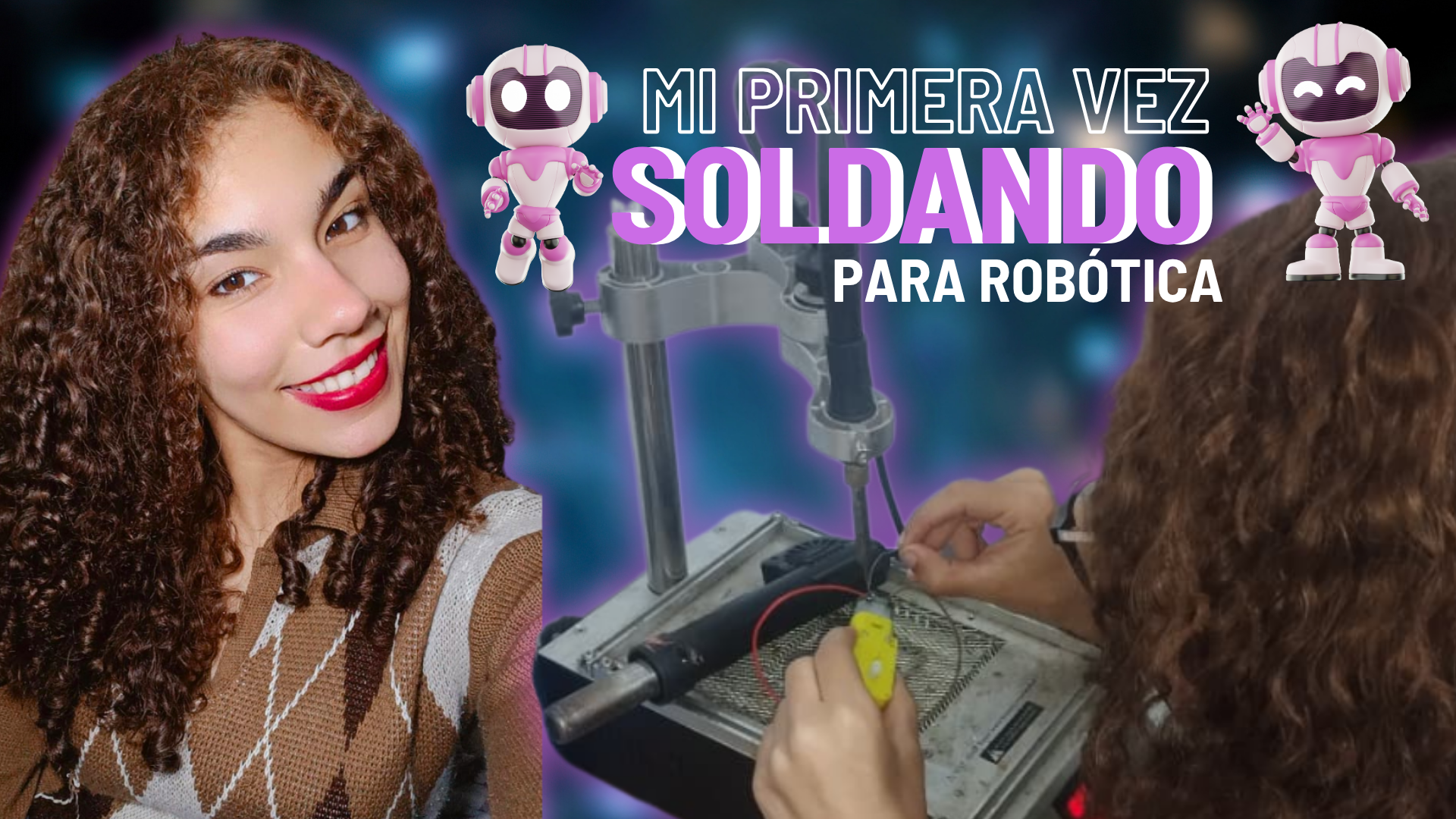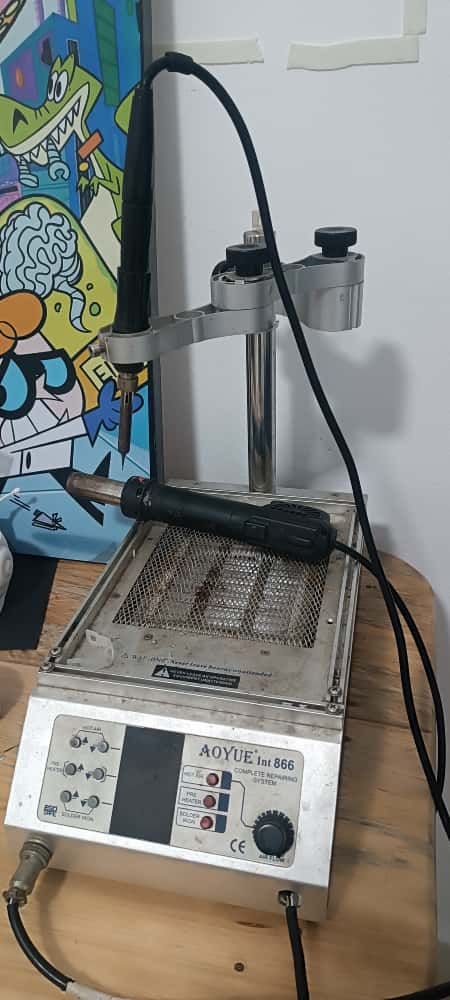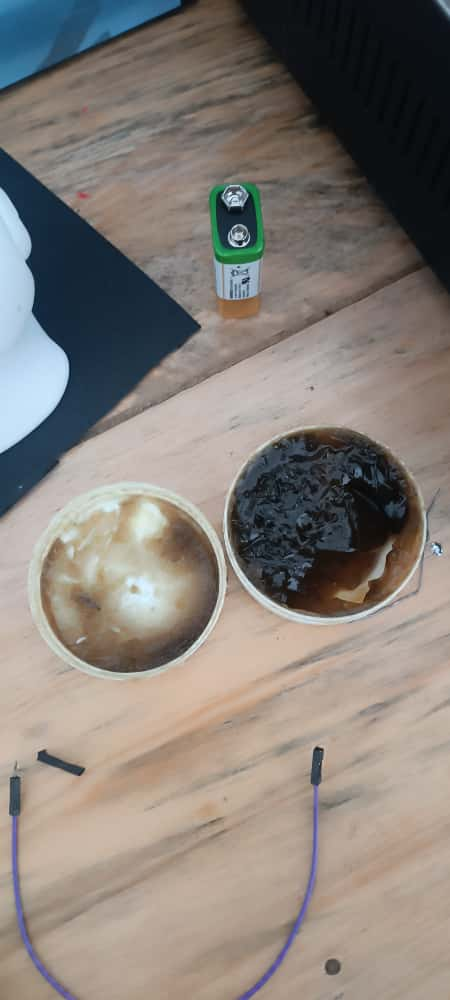
En la Academia donde tomo cursos los fines de semana, relacionados con mi carrera universitaria en Ingeniería de Sistemas, me brindaron la oportunidad de impartir los cursos de Robótica para niños. Esta experiencia ha sido increíblemente gratificante, ya que trabajo con pequeños genios, súper inteligentes y con una pasión diaria por aprender, lo que hace de esta actividad algo realmente hermoso. Algo que hago es llegar temprano a la Academia y preparar todo el material como los recursos para las clases, chequear el salón, las estaciones de trabajo y los componentes con los que trabajaremos ese día de acuerdo a la programación. Ayer, retiré en la proveeduría de la academia, los componentes para practicar, entre ellos un Motor DC que necesitaba y cuando estoy probándolos me di cuenta que desprendió un cable que tenía soldado, por lo que fui con la persona encargada para que le realizara una soldadura porque realmente era algo mínimo de arreglar, pero este compañero me dijo: ¡Pasa que lo vas a hacer tú misma! Así que me enseñó a hacer **Mi Primera Soldadura** >! [ENGLISH VERSION] At the academy where I take weekend courses related to my university degree in Systems Engineering, I was given the opportunity to teach robotics courses for children. This experience has been incredibly rewarding, as I work with little geniuses who are super intelligent and have a daily passion for learning, which makes this activity truly wonderful. One thing I do is arrive early at the Academy and prepare all the materials, such as resources for classes, check the classroom, workstations, and components we will be working with that day according to the schedule. Yesterday, I picked up the components for practice from the academy's supply room, including a DC motor that I needed, and when I was testing them, I realized that a soldered wire had come loose, so I went to the person in charge to have it soldered because it was really a minor fix, but this colleague said to me, “Go ahead and do it yourself!” So he taught me how to do **My First Soldering**.

Estaba conectando cables eléctricos a un Motor DC de corriente continua, es un motorreductor de color amarillo que pueden ver en las fotos, y lo utilizaría como parte de un proyecto de robótica. Lo que realicé es un proceso de **SOLDADURA BLANCA** (Soft Soldering), que es el método estándar para unir componentes y cables electrónicos. La soldadura se utiliza para crear una unión eléctrica y mecánica entre el cable y los terminales del motor. >! [ENGLISH VERSION] I was connecting electrical wires to a DC motor, which is a yellow gear motor that you can see in the photos, and I would use it as part of a robotics project. What I did was a process called soft soldering, which is the standard method for joining electronic components and wires. Soldering is used to create an electrical and mechanical connection between the wire and the motor terminals.

Utilicé: * **Máquina de Soldar** que es una Estación de Soldadura y Retrabajo de Aire Caliente, y utilicé el componente de cautín o soldador (la punta caliente) para fundir el estaño. * **El Estaño** es la aleación de metal (el material de relleno) que se funde para crear la conexión. * **Flux (Pasta para soldar)** es un material pastoso de color oscuro que está en un recipiente. Su función principal es limpiar químicamente las superficies metálicas (los cables y los terminales del motor) de cualquier óxido e impurezas, permitiendo que el estaño fundido fluya, "moje" las superficies y se adhiera correctamente, asegurando una soldadura fuerte y confiable. * **Cinta Aislante o Cinta Eléctrica** se utiliza para que "no conduzca electricidad". Su función es el aislamiento. Después de soldar, la unión de metal y estaño queda expuesta, entonces la cinta aislante se coloca sobre estas conexiones para prevenir cortocircuitos. Es decir, evita que el metal de la conexión toque accidentalmente otro cable o componente conductor, lo que podría dañar el circuito o agotar la batería. >! [ENGLISH VERSION]I used: A soldering machine, which is a hot air soldering and rework station, and I used the soldering iron component (the hot tip) to melt the tin. Tin is the metal alloy (the filler material) that melts to create the connection. Flux (soldering paste) is a dark-colored paste-like material that comes in a container. Its main function is to chemically clean metal surfaces (the wires and motor terminals) of any oxide and impurities, allowing the molten tin to flow, “wet” the surfaces, and adhere properly, ensuring a strong and reliable solder joint. Insulating tape or electrical tape is used to prevent the conduction of electricity. Its function is insulation. After soldering, the metal and tin joint is exposed, so insulating tape is placed over these connections to prevent short circuits. In other words, it prevents the metal in the connection from accidentally touching another wire or conductive component, which could damage the circuit or drain the battery.
 |
 |
|---|---|





